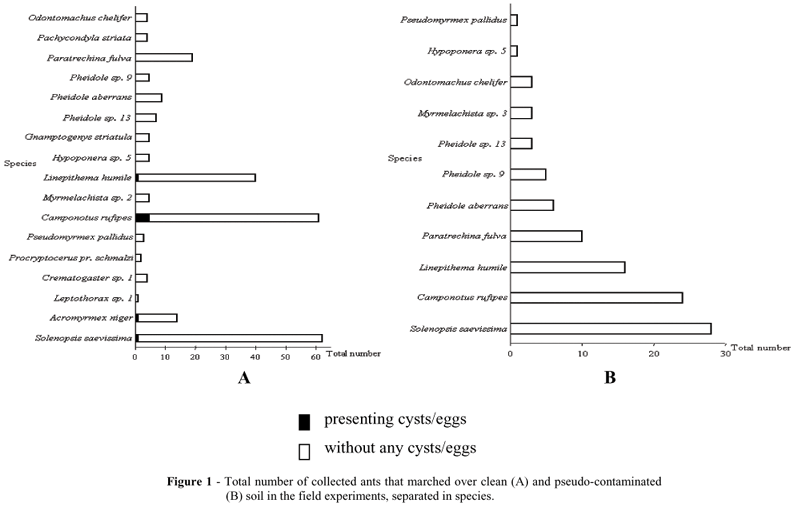Nematodes and protists can be transmitted to humans in many ways and little concern has been given to the mechanical transmission by ants. This study aimed at analysing how the eggs of Ascaris lumbricoides and cysts of Entamoeba coli could be mechanically transmitted to the man by Formicidae. Through the experiments using nests of Tapinoma melanocephalum, Linepithema humile and Monomorium pharaonis reared in the laboratory allied to observations of some 17 ant species in an urban park area in Mogi das Cruzes (SP), it was found that L. humile was capable of carrying eggs of A. lumbricoides both in the field and laboratory conditions (1 worker), as well as was Camponotus rufipes (2), Solenopsis saevissima (1) and Acromyrmex niger (1). The cysts of Escherichia coli were found over three workers of C. rufipes. Although the frequency of the workers found transporting pathogens was low, the capacity of common household species in carrying pathogens like nematodes and protists was demonstrated.
Ascaris lumbricoides; Entamoeba coli; ant; mechanical vector


